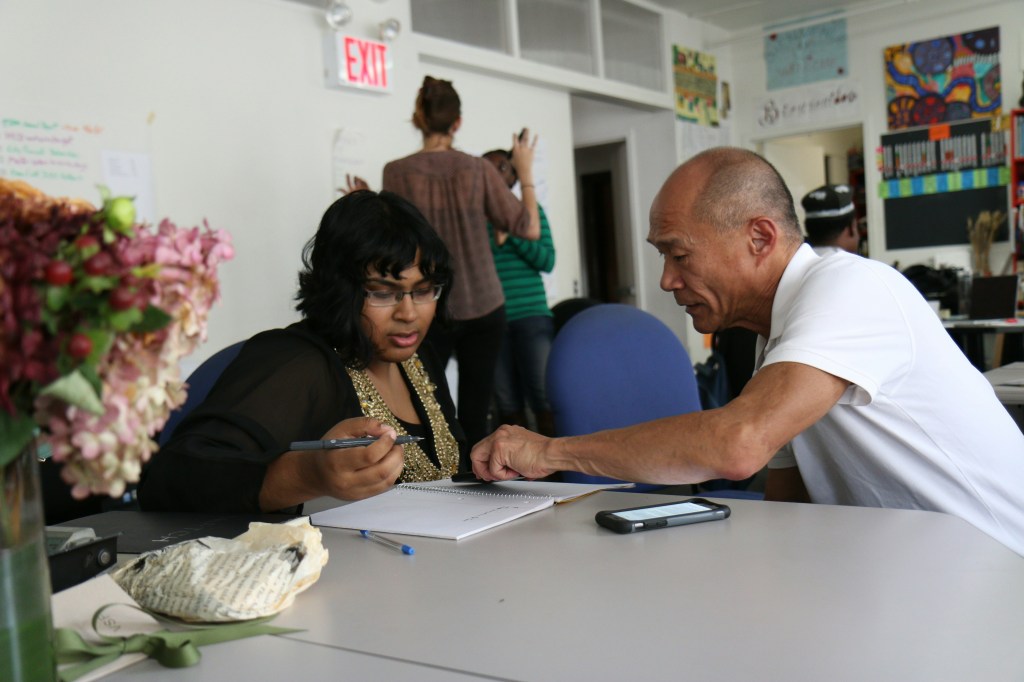For freelance artists and producers, converting your expertise into creative courses can be one of the most efficient ways to establish a profitable side hustle. Side hustles can be valuable endeavours for any sole trader and can broaden your network to a global audience.
It may be challenging to know where to start, especially when there are more options than ever to serve content online and in-person. This guide breaks down eight practical steps for converting your expertise, starting from nothing to a profitable business.
Jump to:
Knowing your audience
Any business venture starts with understanding your target market. Creative artists are at an advantage when establishing teaching careers because they often represent a reflection of their key demographic – they are just at a different point in their career.
Reflect upon your knowledge at different stages of your career – a year ago, five years ago, at the beginning of your job, or even while studying. What knowledge, skills or advice would you have highly valued at that time? And how would you have most valued obtaining that knowledge? Online? In-person? Or a resource of some kind? Also, consider how much you would have spent to access that content.
Establishing your knowledge
Many of the lessons you’ve already learned from building an arts career are transferable to teaching content. ArtsHub has plenty of guides on this topic, including key advice on starting arts businesses and switching from a “creative” mindset to a “business” mindset. We’ve collated all of our most up-to-date resources in this handy guide.
Also, doing a skills audit on what you already know is advisable. Skills that you may consider mundane and everyday would possibly be stunning for newcomers. Keep a diary for a week or two and reflect on what skills you’re already using, from networking to craft-specific software and tools, to marketing and more.
Read: The Artist’s Way: an invitation to change your life
Placing boundaries
Most artists see teaching content as an add-on to their creative career. That’s why it’s essential to ask yourself how much time you’re willing to commit to establishing and maintaining your content in the early stages of planning. Your answer will directly impact your plans.
Online material takes substantial investment at the outset, but is relatively easy to maintain once it’s established. In-person content requires less initial investment, but will take more energy to keep over a longer time span.
It’s safest to plan as you will have less time than expected. Your plans will also need to accommodate sudden changes. What happens if you get a commission or other creative gig? How can you ensure this arm of your business fits into your current workflow?
Testing your content
Construct a quick and robust prototype to establish your audience and test the market interest. Take one of your micro-skills and create content: a TikTok, an Instagram reel, a Facebook post, a YouTube video or a blog. Any or all of these, but keep in mind that it’s a prototype. Consider it a rough draft of what’s to come.
Reflect on how users interact with your content. If you’re disappointed by the results, try again. If you have a few engaged audience members, message them to ask what they found most valuable about the content or if there’s anything else they may like to know.
Building creative courses online
Building your work online is preferable to reaching a global audience with relatively little administration. However, building courses online takes a significant initial investment of time, as you will potentially need to learn a new platform and film yourself delivering content.
Consider the boundaries you put in place for yourself. When in doubt, rough and ready (and low-tech) versions are entirely acceptable.
You can undoubtedly create online content using the materials you already have at hand. Record a seminar in Zoom utilising the microphone and camera you already have. Put this recording in a secure Google Drive or cloud server, then charge your potential students to access the link (you can include supplementary materials such as PDFs, slides or exercises).
For more advanced (and global) platforms, investigate the following options.
- Skillshare is a bright and easy-to-use platform that hosts short courses (typically an hour long, made up of videos broken into small chunks). Users pay a monthly fee to sign up to access everything on Skillshare. If users access your content, you receive a small fee. This is great for a scattershot approach: you will be in contact with a broad range of users who are strangers to you. Skillshare speaks directly to the creative market.
- Coursera is the more grown-up, academic cousin of Skillshare. Again, users pay a subscription fee to access all content, which tends to be larger, specialised courses. Popular courses are typically in software engineering and computer science, so the audience is much broader than creative artists.
- Udemy prices courses individually and offers a subscription option. That means you can market your course directly to your network while also being showcased to Udemy users. Udemy’s content is diverse in subject area, quality and length.
There are many other options for building custom courses on an independent platform. However, it’s generally advisable that you begin with one of the services above. These platforms make hosting and administering your course relatively simple and will build up a network of users who may be willing to invest in larger, more expensive content (if you should decide to expand).

Building creative courses in-person
In-person courses mean a more meaningful relationship between you and your community, and teaching a more diverse range of skills. In-person content also has significantly less initial time investment than online content, but requires more administration.
To begin, consider a short course or one-day seminar. This will allow you to test content and establish a market.
Finding a neutral space such as a community hall is advisable. Research spaces available to you in your city, and keep in mind that spaces advertised as studios, gyms, yoga rooms or therapy rooms may be useful. Communify has an extensive library of spaces available to hire from across Australia.
You will need a way for participants to pay. If you already have a website, establishing a commerce portal should be relatively simple. Alternatively, use a service such as EventBrite. Be careful, however, these portals can charge hefty sums in transaction fees that will eat into your margins. If you are satisfied with a low-tech option, you may be happy to invoice your participants with your bank details.
Consider also if you could film your in-person teaching. You may be able to use it later as online content.
Marketing your course
Many of the same rules apply for marketing your arts business as your course content. Here are a few essential tips:
- Provide small pieces of the course for free, including little exercises or simple resources, by filming short online videos or writing blogs.
- Find Facebook and LinkedIn groups that host your ideal audience and post details about your class.
- Be willing to spend money creating online ads if you can afford it.
If your marketing falters, consider offering discounts or shorter courses that may serve as appetisers for your larger plans.
Gathering feedback
No matter your course platform or content, always gather feedback. Positive feedback means testimonials that you can publish as a way of further promoting your course. Surveys will also generate ideas for different content, or provide insight into how you can make your content better. Simple online surveys can be created through services like Google Forms or Survey Monkey. For extra incentive, offer users a small reward if they fill out the survey (a bonus PDF covering some extra material, or a discount to your online store, for example).





